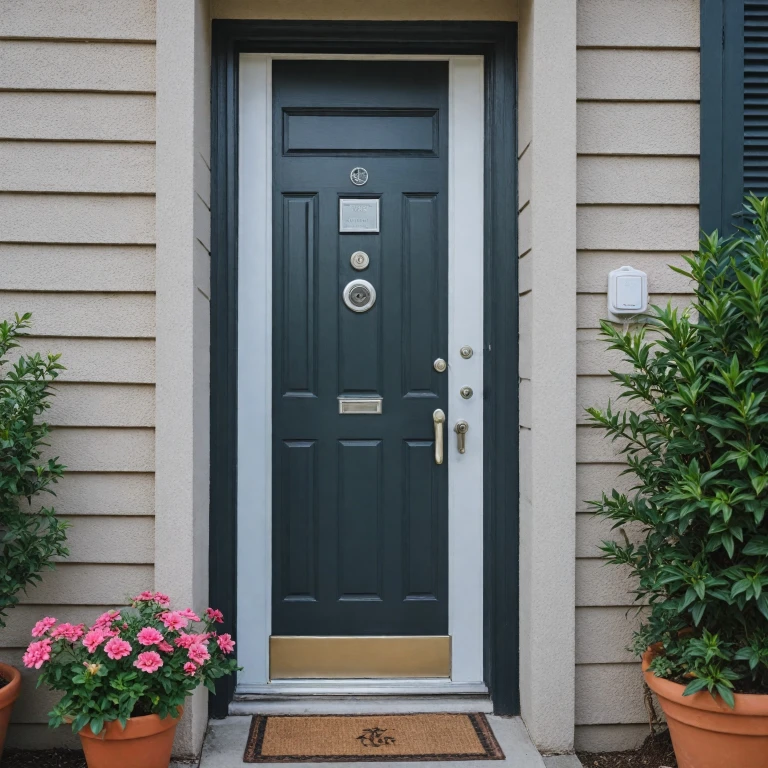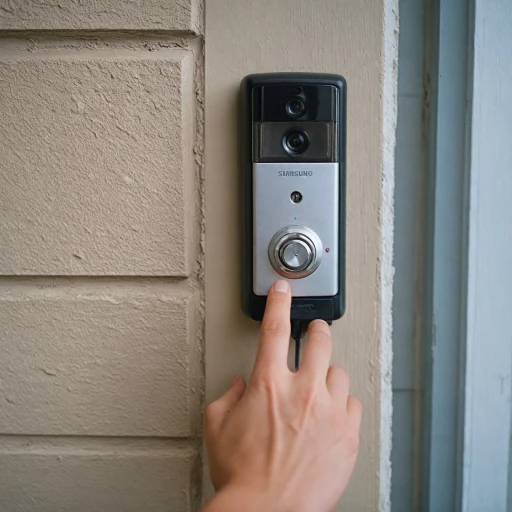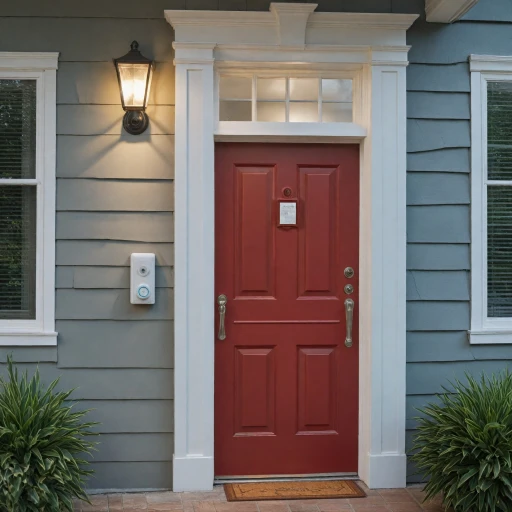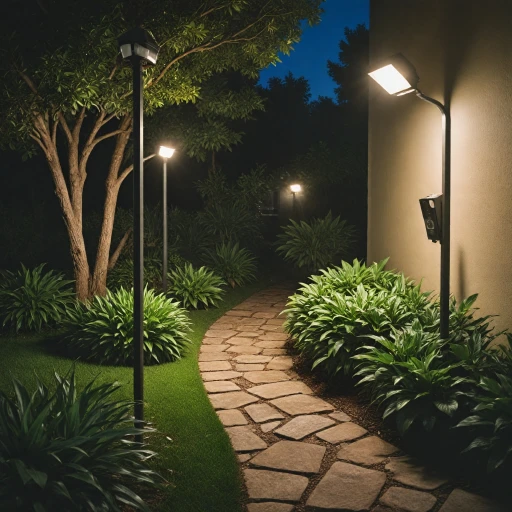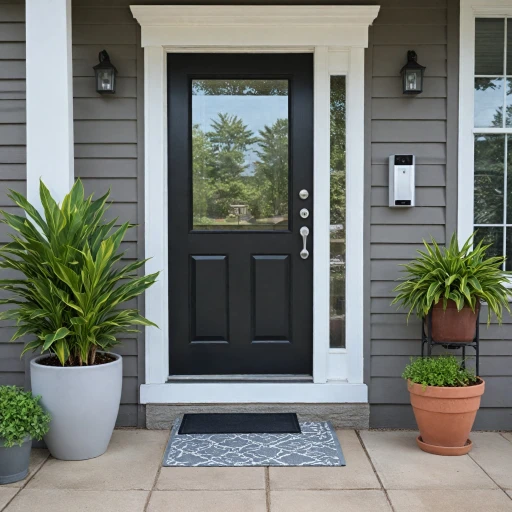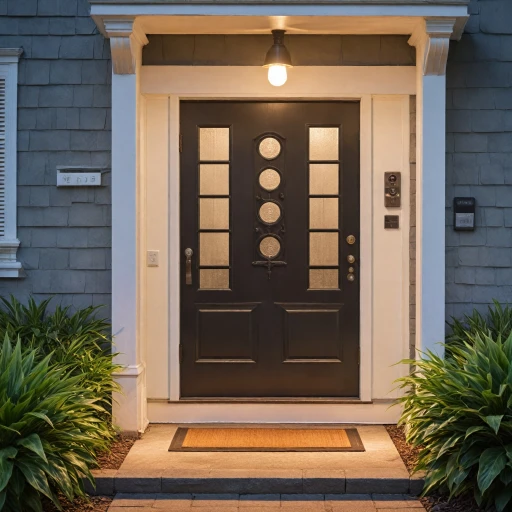
Understanding Your Ring Doorbell
Familiarizing Yourself with the Ring Doorbell
Purchasing a video doorbell, particularly from the Ring lineup, can enhance your home's security by allowing you to monitor your front door through real-time video and alerts. When considering installation, it's essential to first understand the components and capabilities of your specific Ring doorbell generation. Ring offers several versions of the doorbell, each with unique features. Common components include the video camera, motion detector, mounting bracket, and often, security screws for secure installation. Some models are battery powered, while others may require existing doorbell wires for power. Before proceeding to install, determining your home setup and the power option your Ring doorbell requires will aid in a seamless installation process. You'll also encounter tools and components such as screws, a drill bit, anchors, and sometimes an additional power plug or wire. It's important to be equipped with the right tools, including a drill, to ensure a sturdy installation on your wall surface or doorframe. For a detailed installation process tailored to various Ring models, explore our link on successful installation methods which provides step-by-step guidance and insights into the installation nuances for different environments and doorbell generations.Preparing for Installation
Gathering Your Tools and Materials
Before you start installing your Ring doorbell, it's essential to gather all the necessary tools and materials. Having everything on hand will make the process smoother and more efficient. Here's what you'll need:
- Screwdriver
- Drill and drill bit
- Mounting bracket
- Screws and anchors
- Security screws
- Level
- Battery or power adapter (depending on your model)
- Ring app installed on your smartphone
Checking Your Existing Doorbell Setup
Before you remove your existing doorbell, it's crucial to understand your current setup. Determine whether your existing doorbell is wired or wireless. If it's wired, you'll need to identify the doorbell wires and turn off the power at the circuit breaker to ensure safety during installation. If you're installing a battery-powered Ring video doorbell, you can skip this step.
Choosing the Right Location
Deciding where to install your Ring doorbell is a key step in the process. Consider the following factors:
- Height: Install the doorbell at about 48 inches from the ground for optimal video coverage.
- Field of View: Ensure the camera has a clear view of your entryway and any approaching paths.
- Wi-Fi Signal: Check that the location has a strong Wi-Fi signal to ensure reliable video streaming.
Preparing the Wall for Installation
Once you've chosen the location, it's time to prepare the wall. Use the mounting bracket as a template to mark where you'll drill holes. If you're installing on a brick or concrete wall, use anchors to secure the screws. For wooden surfaces, you can screw the bracket directly into the wall.
For more detailed guidance on understanding the Ring video doorbell, visit our comprehensive guide.
Step-by-Step Installation Process
Initiating the Installation Procedure
Embarking on the journey to install your Ring Video Doorbell involves meticulous planning. To ensure a smooth process, first gather all the items you received with your device and acquire additional tools if necessary.
Attaching the Mounting Bracket
Begin by determining the optimal location for your device on the doorbell wall. It’s crucial to ensure the mounting bracket is securely fastened to provide stability for the doorbell. Use a drill and appropriate drill bit to create precisely positioned drill holes. If you're attaching the bracket to a masonry surface, employ anchors to bolster adherence.
Securing the Doorbell
With the mounting bracket in place, align the Ring Doorbell with the bracket and attach it using the supplied screws. Pay attention to the type of screws, using security screws if provided, to protect against potential tampering.
Powering the Device
For Ring Doorbells compatible with existing doorbell wires, connect them to the appropriate terminals on the device. Ensure to turn power off at the breaker before handling wires to avoid any electrical hazards. If it's a battery-powered generation Ring device, charge and properly insert the battery.
Finalizing the Installation
Once the Ring Doorbell is securely attached and powered, verify that it’s correctly positioned. Adjustments might be necessary to ensure that the video coverage includes the desired area. Once satisfied, plug any open wire slots if present, and proceed to configure your device settings as per your preference to enable functions like motion detector alerts via the Ring app.
For a comprehensive comparison between different models and their installation nuances, "read more on differing functions and features" of current variants.
Configuring Your Ring Doorbell Settings
Optimizing the Settings for Best Performance
Once you've installed your Ring video doorbell, it's important to fine-tune its settings to ensure it meets your needs effectively. Here’s a step-by-step approach to configuring your ring doorbell settings.Connecting to Wi-Fi
- Download the Ring app on your smartphone.
- Tap on 'Set Up Device' and select 'Video Doorbell' from the list.
- Follow on-screen prompts to connect to your Wi-Fi network. Ensure your router is broadcasting a 2.4 GHz connection, as this frequency offers better range.
Personalizing Motion Detection
- Open the app and select your ring video doorbell.
- Navigate to 'Motion Settings' to adjust detection zones and sensitivity.
- Fine-tune detection ranges by experimenting with different settings until it accurately matches your entryway activity.
Power Source Monitoring
For battery-operated versions, monitor the battery level regularly to avoid missed captures. If your setup involves doorbell wires, ensure the doorbell is receiving the appropriate power – this involves checking connections at the screw bracket and ensuring there's no corrosion where the wires meet the existing doorbell setup.Customizing Alerts
Choose how and when you receive notifications. Under 'Device Settings,' tap 'Alert Settings,' and tailor notifications to minimize disturbances while keeping you informed about crucial events.Integration with Smart Home Systems
- Use the Ring app to pair your installation with Alexa or other smart home assistants for voice commands and enhanced control.
- Configure routines that fit your lifestyle, from turning on lights when motion is detected to activating security system responses.
Troubleshooting Common Issues
Troubleshooting Ring Doorbell Installation Issues
Even with the best intentions and preparations, doorbell installations can sometimes encounter a few hurdles. Let's address some common issues you might face after installing your Ring video doorbell and explore how you can resolve them effortlessly.- Power Issues: If your Ring doorbell is not powering up, first ensure the power is turned on at the breaker. Double-check the connections to your existing doorbell wires and ensure they are securely attached to the mounting bracket. Sometimes, the battery might need a full charge before operation, especially if you're handling a battery-powered model.
- Video Quality and Connectivity: Experiencing fuzzy video or connectivity dropouts? Verify that your Wi-Fi signal is strong and reaches your ring device. Reposition your router or use a Wi-Fi extender for better coverage. Also, ensure the Ring app on your phone is updated to support the latest generation of devices.
- Motion Detector Sensitivity: If you're overwhelmed by motion alerts, recalibrate the sensitivity settings through the Ring app. Adjust the motion zones to focus on specific areas and skip alerts from less relevant places, like streets.
- Physical Installation Problems: Double-check that your installation follows the required steps. Make sure the doorbell bracket is securely attached to the wall using the appropriate screws and wall anchors if needed. If screws or the drill bit provided do not fit the wall material, opt for durable alternatives.
- Mounting and Alignment Issues: If the video view seems tilted or misaligned, ensure your ring doorbell is installed evenly on the bracket wall. Re-drill holes if necessary to correct the alignment for optimum video capture.
Enhancing Security with Additional Features
Elevate Security with Advanced Features
Strengthening the security of your home doesn't end with the basic installation of your ring video doorbell. By exploring the additional features and using them effectively, you can maximize your doorbell's potential. Here are some ways to enhance security:- Motion Detector Sensitivity: Utilize the motion detector adjustments to fine-tune the sensitivity levels. This feature allows you to focus on specific zones and reduce false alarms. Experiment with different settings to match the traffic around your front door.
- Doorbell App Notifications: Set up your ring app to receive instant notifications on your mobile device upon detecting motion or when someone rings the doorbell. Immediate alerts keep you updated on visitors or suspicious activity, ensuring prompt responses.
- Video Monitoring and Capture: Enable continuous video recording to capture events around your doorbell effortlessly. Such a feature can be particularly valuable in case of incidents, providing crucial footage to authorities when necessary.
- Enhancing with Security Screws: Make use of security screws to discourage tampering. By removing regular screws and installing specialized security screws, you add an extra layer of protection against theft or unauthorized removal.
- Generation-Specific Features: Newer generation models offer advanced functionalities like person detection and customizable motion zones. Check if your ring doorbell model supports these features and explore them to add value to your security setup.
- App Configurations: Delve deeper into your ring app settings after installation. Customize settings tailored to your preferences, like enabling two-factor authentication for additional account security.
